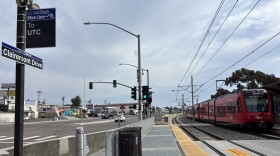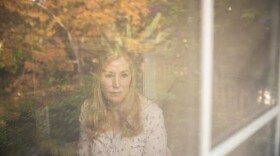In Virginia, two of the top three statewide elected officials have admitted to wearing blackface several decades ago. While Gov. Ralph Northam denied that he appears in the racist photo on his page of his medical school yearbook, he did admit to painting his face with shoe polish while dressing up as Michael Jackson for a dance contest in the 1980s. Meanwhile, Attorney General Mark Herring admitted that he, too, wore blackface while dressing up with college friends as rappers.
Those are the scandals stealing headlines, but Florida's Secretary of State recently resigned for dressing as an African-American Katrina victim, again, using blackface. Fashion house Gucci has pulled a sweater from its physical and online stores for its resemblance to blackface.
Blackface has been around since the 1830s, first appearing in minstrel shows where white actors would perform as black characters.
"They [were] literally watching black people in their moments of levity and privacy — it's being invaded and then co-opted and distorted. There's a violence to that," says Christy Coleman, CEO of the American Civil War Museum in Richmond.
That sentiment is reverberating across Virginia this week, even on the grounds of the state capitol. "Who is that funny to?" asks Kevin Williams, a businessman in town from Fredericksburg, Va. "It's just not funny. There's nothing funny about blackface." Williams is African-American and says he has lost faith in the elected officials caught up in the scandal.
This week, photos from old yearbooks popped up on social media. Photos of college students reenacting lynchings and blackface cartoons were shared thousands of times on Twitter, and many Americans began to ask, why?
"It's really the first truly American theater," says Historian Gregg Kimball at the Library of Virginia. Kimball points out that minstrel shows were popular entertainment. And largely in northern and Midwestern cities, not the South.
"I grew up in a small town in New Hampshire. When I cleaned out my great aunt's house there was a minstrel program. Our town had no black people in it. So this was not like a Southern thing. It was an American thing," he says.
It was a form of American theater that used exaggerated stereotypes of black people. "They're lazy, they're unintelligent, they're prone to thievery, crooks," says Dwandalyn Reece. She's Curator of Music and Performing Arts at the National Museum of African-American History and Culture in Washington, D.C.
By the turn of the century, the racist caricatures were popularized in vaudeville, and eventually radio, TV and film. In one comedy act called "Two Black Crows," white actors stumble about as naive and unintelligent black characters while wearing blackface, floppy hats and big white lips.
Reece says a roster of these kinds of recurring characters developed into many that we may recognize today: "The mammy figure. There is also the figure of Jim Crow — Jump Jim Crow." Those caricatures proliferated and came to stand for segregation, racism, and the treatment, unfair and inhumane treatment of African-Americans, Reece says.
For many Americans, particularly outside the South, these popular images were the only lens to view African-Americans. And it was a distorted view, Reece says.
The minstrel caricatures started showing up on toys, games, books, even postcards and everyday household items. Reece says there was a tremendous market for them. "You really see how it starts to shape people's attitudes around race and the prejudices and biases that come out of that."
What's happening in Virginia, Reece adds, provides something visceral — and concrete — to have an honest dialogue about race and the dehumanizing impact of blackface.
Copyright 2019 NPR. To see more, visit https://www.npr.org.






